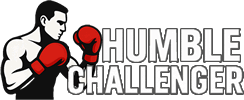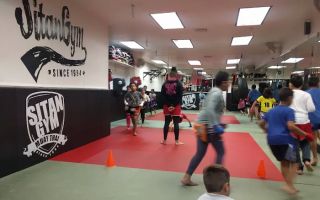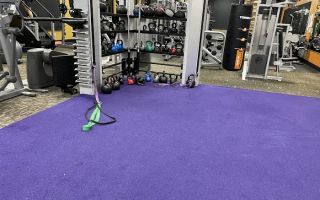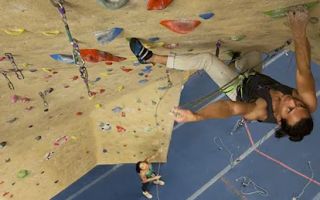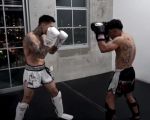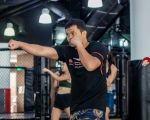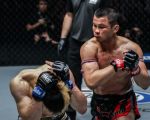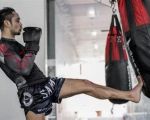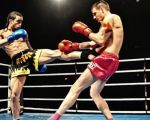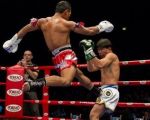How to Perform a Perfect Muay Thai Elbow Strike: A Comprehensive Guide
Muay Thai, known as the "Art of Eight Limbs," utilizes fists, elbows, knees, and shins as weapons. Among these, the Muay Thai elbow strike is one of the most devastating and versatile techniques, capable of delivering significant damage to your opponent. Perfecting this strike requires not only physical strength and agility but also technique and timing. In this article, we'll break down how to perform a perfect Muay Thai elbow strike, highlighting the key components and common mistakes to avoid. Whether you're a beginner or an experienced practitioner, this guide will help you refine your technique.
- 1. The Importance of the Elbow Strike in Muay Thai
- 2. Types of Muay Thai Elbow Strikes
- 3. How to Position Your Body for an Effective Elbow Strike
- 4. Common Mistakes When Performing an Elbow Strike
- 5. How to Increase Power and Accuracy in Your Elbow Strike
- 6. Elbow Strike Drills and Training Tips
1. The Importance of the Elbow Strike in Muay Thai
The Muay Thai elbow strike is a vital component of the sport, offering close-range effectiveness and immense power. Unlike punches or kicks, elbows are a natural part of the body's structure and can be used in a variety of situations. The elbow strike allows fighters to attack from different angles, such as horizontal, diagonal, and downward, and can be used both defensively and offensively. Because the elbow is a sharp, hard part of the body, it can cause deep cuts and bruising, making it a weapon of choice for Muay Thai practitioners.
In Muay Thai, the elbow is not just a tool for inflicting pain, but also a way to break through an opponent’s defense, setting them up for other strikes. Whether you’re looking to score points or end a fight decisively, the elbow strike is an indispensable skill that every fighter must master.
2. Types of Muay Thai Elbow Strikes
There are several types of Muay Thai elbow strikes, each with its unique application. Understanding these different types will allow you to choose the best technique depending on the situation and your positioning:
- Horizontal Elbow: This is a common strike used to target an opponent’s head or face from close range. The elbow is thrown horizontally across the opponent’s face or temple, causing significant damage if landed correctly.
- Diagonal Elbow: The diagonal elbow is used when you’re at a slight angle to your opponent. It is ideal for breaking through the guard and targeting the chin or neck.
- Uppercut Elbow: The uppercut elbow is a powerful strike thrown upward from the bottom of your body, aiming for the chin or face. This strike is particularly useful in clinch situations, where you can generate force with your legs to propel the elbow upward.
- Spinning Elbow: The spinning elbow strike involves rotating your body to generate additional power. It's a surprise attack, often used when your opponent is distracted, and it can land at various angles to disorient them.
- Downward Elbow: The downward elbow is typically used when you are above your opponent, such as during a clinch or when they are bent forward. It can land with devastating force on the opponent's head or shoulders.
Each type of elbow strike has its strengths and applications, making the Muay Thai elbow a versatile weapon in any fighter's arsenal.
3. How to Position Your Body for an Effective Elbow Strike
To perform a perfect Muay Thai elbow strike, proper body positioning is essential. It is not just about swinging the elbow; it's about positioning your body for maximum power and precision. Here’s how to position your body:
- Step 1: Align Your Feet: Start by ensuring your feet are positioned correctly. For a horizontal elbow, your lead foot should be slightly forward and your rear foot should provide the pivot. This stance allows you to generate the necessary torque for a powerful strike.
- Step 2: Rotate Your Hips: As you initiate the elbow strike, your hips should rotate toward your opponent. This rotation helps transfer the energy from your lower body into the strike, making it more powerful.
- Step 3: Keep Your Elbow Tight: When executing the elbow strike, make sure that your elbow is tight to your body. A loose elbow will reduce the impact and effectiveness of the strike.
- Step 4: Use Your Core: Engage your core muscles to add force to the strike. Your core muscles are the driving force behind most Muay Thai techniques, including the elbow strike.
- Step 5: Follow Through: Don’t just stop after you make contact. Follow through with the elbow strike, pushing through your opponent’s guard to ensure maximum damage.
Proper technique, including body alignment and movement, is the key to performing a perfect Muay Thai elbow strike. Without the right posture, your elbow strike may lack the power or precision needed to be effective.
4. Common Mistakes When Performing an Elbow Strike
While performing a Muay Thai elbow strike may seem simple, many beginners make common mistakes that can reduce the effectiveness of their strikes or even lead to injury. Here are some mistakes to avoid:
- Overextending the Elbow: One of the most common mistakes is overextending the elbow too far, which can lead to reduced power and expose you to counterattacks. Keep your elbow tight to your body to ensure precision and control.
- Not Using the Core: Relying solely on your arm strength will make your elbow strike weak and ineffective. The power should come from your core and hips, not just your arm.
- Weak Pivot: A weak pivot reduces the power of your strike. Always make sure to pivot your back foot and rotate your hips when throwing an elbow.
- Incorrect Targeting: Striking the wrong target, such as hitting with the wrong part of the elbow, can make your strike less effective. Ensure you're hitting with the sharp, bony part of the elbow for maximum impact.
Avoiding these common mistakes will help you perform an effective and powerful elbow strike that will leave a lasting impact on your opponent.
5. How to Increase Power and Accuracy in Your Elbow Strike
To make your Muay Thai elbow strike more powerful and accurate, you must focus on improving key elements of your technique. Here are some tips to enhance your elbow strikes:
- Strengthen Your Core: A strong core is essential for generating power in your elbow strike. Regular core workouts like planks and leg raises can improve your power output.
- Focus on Speed: The faster you throw the elbow, the more powerful it will be. Speed adds momentum, which translates into force.
- Increase Flexibility: Flexibility in your shoulders and upper body will help you deliver a quicker and more fluid elbow strike. Regular stretching can improve your range of motion.
- Drill with a Partner: Practice elbow strikes with a partner to develop timing, accuracy, and precision. Pad work and controlled sparring can improve your overall technique.
Power and accuracy come with consistent practice. Focusing on these areas will help you perfect your Muay Thai elbow strike and make it more effective in any situation.
6. Elbow Strike Drills and Training Tips
To truly master the Muay Thai elbow strike, you need to incorporate specific drills into your training routine. These drills can help improve your technique, speed, and power:
- Shadowboxing: Shadowboxing with an emphasis on elbow strikes helps you practice form and movement without the pressure of an opponent.
- Elbow Strike Pads: Working with focus pads allows you to practice precision and timing. Have your partner hold the pad in various positions to simulate real fight scenarios.
- Elbow Strikes in the Clinch: Practicing elbow strikes while in the clinch position helps you become comfortable using this technique when you're close to your opponent.
- Conditioning: Strengthening your shoulders and arms through resistance training and bodyweight exercises will help increase the force of your elbow strikes.
Incorporating these drills into your regular training will help you become more proficient at performing the perfect Muay Thai elbow strike.
If you're ready to take your Muay Thai skills to the next level and learn more about improving your technique, visit Humble Challenger for training tips, equipment recommendations, and expert advice.
